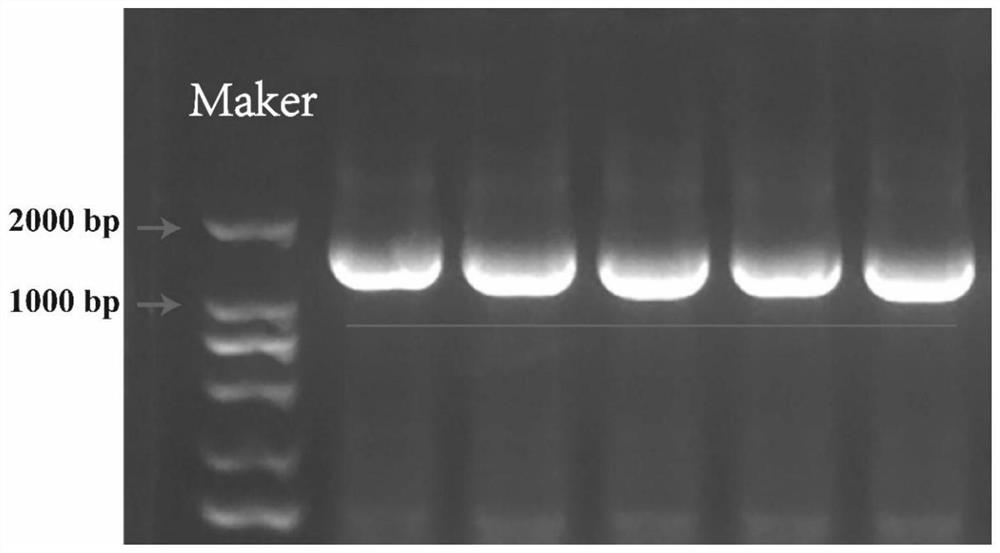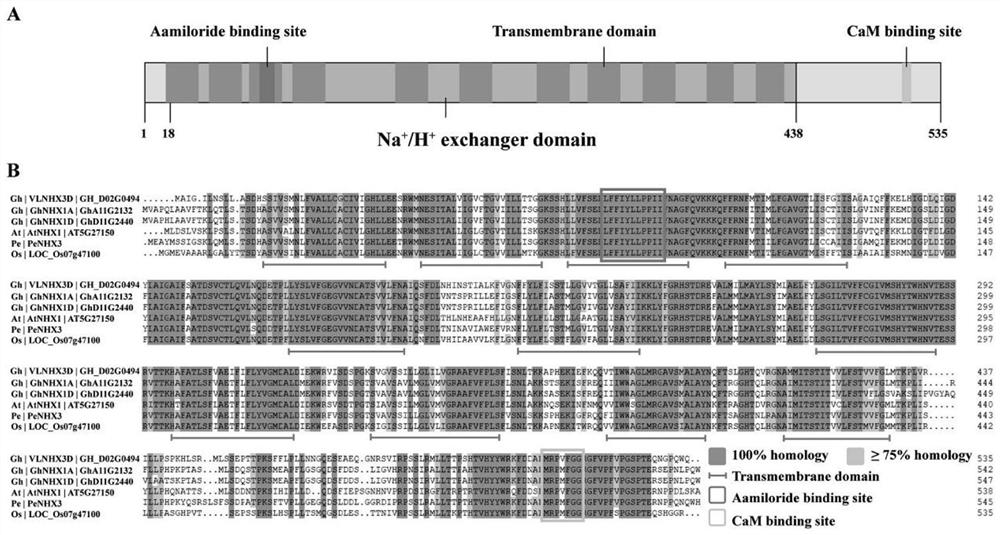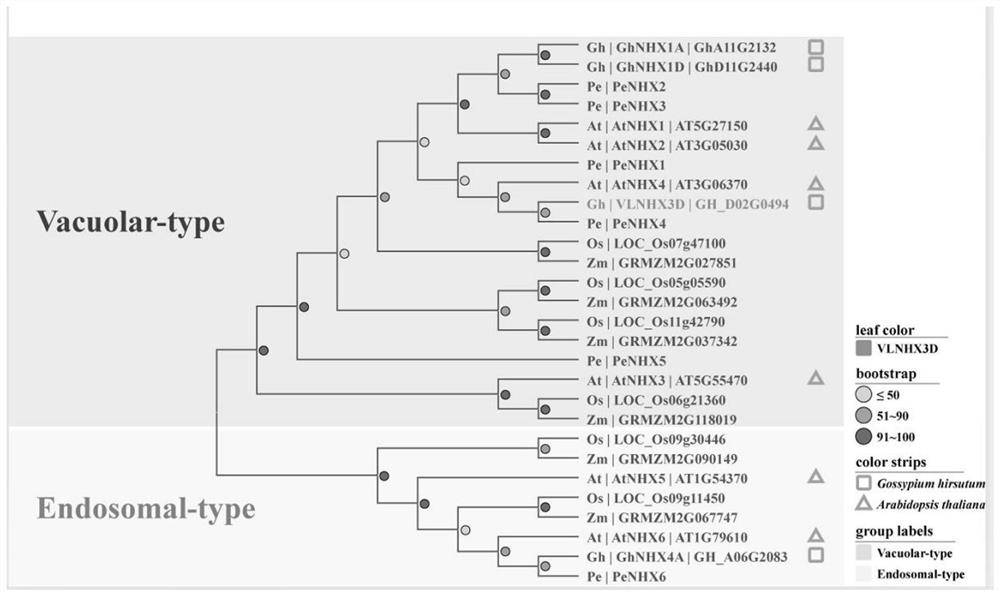Application of gene VLNHX3D in regulation of Na<+> and/or K<+> concentration of plant cells
A plant cell and transgenic plant technology, applied in botany equipment and methods, angiosperms/flowering plants, applications, etc., can solve problems such as the unknown state of gene function, achieve high salt tolerance, and improve plant salt tolerance.
- Summary
- Abstract
- Description
- Claims
- Application Information
AI Technical Summary
Problems solved by technology
Method used
Image
Examples
Embodiment 1
[0074] 1. Extraction of total RNA: Take the roots, stems and leaves of cotton materials frozen at -80°C and grind them into powders in liquid nitrogen, respectively, and put 100 mg of sample powders into 2 mL RNase-Free centrifuge tubes. Subsequent experimental steps were carried out according to the instructions of Tiangen RNA Extraction Kit (DP441).
[0075] 2. cDNA synthesis: cDNA was synthesized using the reverse transcription reagent HiScript III 1st Strand cDNA Synthesis Kit (+gDNA wiper) (R312-01) from Novozyme.
[0076] 3. Gene cloning (RT-PCR): using the first-strand cDNA obtained by reverse transcription as a template, the high-fidelity enzyme KOD-Plus-Neo (Code No. KOD-401) from TaKaRa Company was used to amplify the target gene.
[0077] Table 2 Gene Cloning PCR System
[0078]
[0079] Table 3 Gene Cloning PCR Reaction Program
[0080]
[0081] 5. At the end of the PCR reaction, use 1.5% agarose gel electrophoresis to detect the P...
Embodiment 2
[0111] 1. Real-time fluorescent quantitative PCR of VLNHX3D
[0112] 1. Cotton materials are roots, stems and leaves at various time points after salt treatment, and RNA is extracted.
[0113] 2. cDNA synthesis: HiScriptII Q RT SuperMix for qPCR (+gDNAwiper) (R233-01) reverse transcription reagent from Novizyme was used.
[0114]3. Design specific fluorescent quantitative primers: use primerpremier 5 to design specific primers for VLNHX3D and GhNHX3A, GhHIS3 is used as an internal reference gene, and the primer sequences are shown in Table 1.
[0115] 4. Real-time fluorescent quantitative PCR (RT-qPCR): use ChamQ Universal SYBR qPCR MasterMix to prepare the following reaction mixture.
[0116] Three biological replicates were performed for each sample, and the results were obtained using 2 -△Ct Perform analytical calculations.
[0117] Among them, the expression level of VLNHX3D in the leaves of upland cotton under no salt stress treatment (0, 1, 3, 6 and 12h) was used as t...
PUM
 Login to View More
Login to View More Abstract
Description
Claims
Application Information
 Login to View More
Login to View More - R&D
- Intellectual Property
- Life Sciences
- Materials
- Tech Scout
- Unparalleled Data Quality
- Higher Quality Content
- 60% Fewer Hallucinations
Browse by: Latest US Patents, China's latest patents, Technical Efficacy Thesaurus, Application Domain, Technology Topic, Popular Technical Reports.
© 2025 PatSnap. All rights reserved.Legal|Privacy policy|Modern Slavery Act Transparency Statement|Sitemap|About US| Contact US: help@patsnap.com



